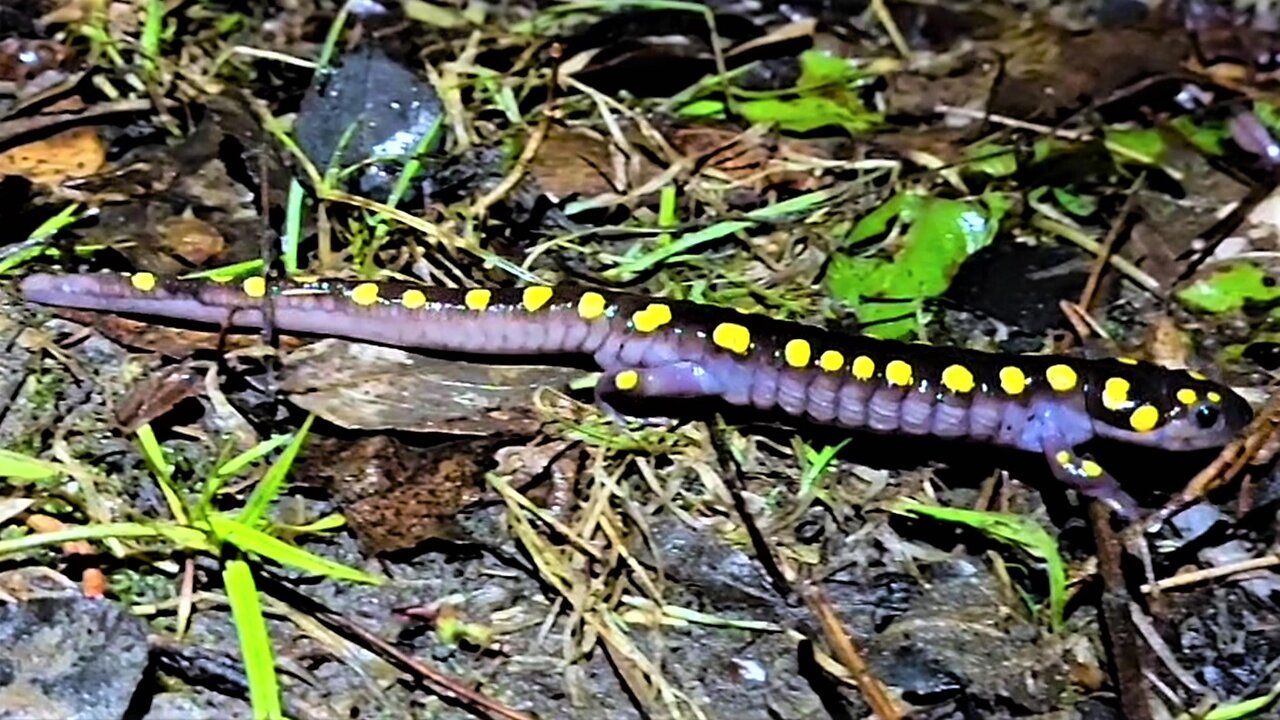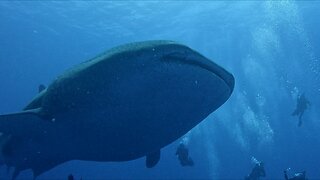Premium Only Content

Spotted salamander spring migration is an incredible event to witness
Spotted salamanders are fascinating creatures that live in most forests throughout central and eastern United States and Canada. They are abundant yet we rarely see them. Like other salamanders, they live under leaves and logs, and in the burrows of small rodents and mammals, spending a great deal of the year underground. They eat worms and insects and keep to themselves.
But every year, these salamanders move in unison in great numbers, seeking the closest pond or vernal pool for breeding.
They prefer small bodies of water without fish, which would eat their eggs. The salamanders can journey considerable distances to find their breeding grounds. This migration takes place at night in the early spring when the snow and ice have just begun to melt. Signaled by their hormones, they wait for the first rainy night that is more than 7°C (45°F) to make their trek to the water. The males arrive first and deposit sperm on the leaf litter in the pond. The females arrive soon after and gather the sperm pouches, taking them inside their bodies to fertilize their eggs. They lay the eggs in masses of up to 100 eggs, attached to submerged sticks near the water's edge.
Salamanders have an amazing regenerative ability that allows them to regrow limbs, organs, and even portions of their brains if they are injured. Scientists are particularly interested in understanding this ability and how it might benefit humans.
Spotted salamanders are unique from other species in several ways. They are the only vertebrate animal in the world that hosts another organism in a symbiotic relationship. Typically, when a vertebrate is a host to another organism, it is a parasitical relationship, having no benefit to the host. In this case, the salamander eggs contain an algae that uses sunlight to create energy and oxygen. This benefits the eggs by helping to sustain them as they grow and develop. The algae benefits from the stability and protection of the egg and also from the carbon dioxide that it consumes, which is produced by the eggs.
The spotted salamander also lays eggs that are coated with a unique outer jelly to prevent the eggs from drying out. On some eggs, the jelly morphs into a water soluble, protein based substance, and on other eggs, it becomes a crystalline protein that repels water. The fact that it develops into two different types allows for the survival of eggs when wood frog larvae are present. The wood frogs would eat the water soluble eggs and deplete the population of salamanders. This is where the algae in the eggs is crucial because the crystalline jelly prevents oxygen absorption from the water.
Nature can be complex and fascinating beyond our expectations. The world around us is more of a wonder than we once realized and we would not even realize it if we did not take a close look at some of the small creatures that are right under our feet.
-
 1:33
1:33
WildCreatures
1 month ago $0.39 earnedGigantic whale shark makes scuba divers look like tiny tadpoles
2.23K5 -
 LIVE
LIVE
Dr Disrespect
7 hours ago🔴LIVE - DR DISRESPECT - BATTLEFIELD 6 - REDSEC - 10 WINS CHALLENGE
2,404 watching -
 LIVE
LIVE
Akademiks
2 hours agoAdin Ross x 6ix9ine x Akademiks stream
628 watching -
 LIVE
LIVE
StoneMountain64
5 hours agoBattlefield REDSEC HARDCORE, Ultra Movement, and CRAZY Portal Games
122 watching -
 1:09:44
1:09:44
Russell Brand
7 hours agoFrom Curb Your Enthusiasm to Courage — Cheryl Hines on Hollywood, RFK Jr. & Speaking Out - SF646
139K34 -
 1:30:26
1:30:26
The Quartering
5 hours agoWoke Is Back!
133K62 -
 1:18:21
1:18:21
DeVory Darkins
6 hours agoTrump issues CHILLING WARNING to GOP as SCOTUS hears arguments regarding Tariffs
119K108 -
 3:35:48
3:35:48
Barry Cunningham
7 hours agoBREAKING NEWS: PRESIDENT TRUMP SPEECH AT THE MIAMI BUSINESS FORUM! (MIKE JOHNSON PRESSER)
112K27 -
 2:04:47
2:04:47
The Charlie Kirk Show
7 hours agoOnward | Henderson, Laurie, Miles | 11.5.2025
115K26 -
 2:15:52
2:15:52
Steven Crowder
10 hours agoWho is the Real Myron Gaines | Ash Wednesday
367K496